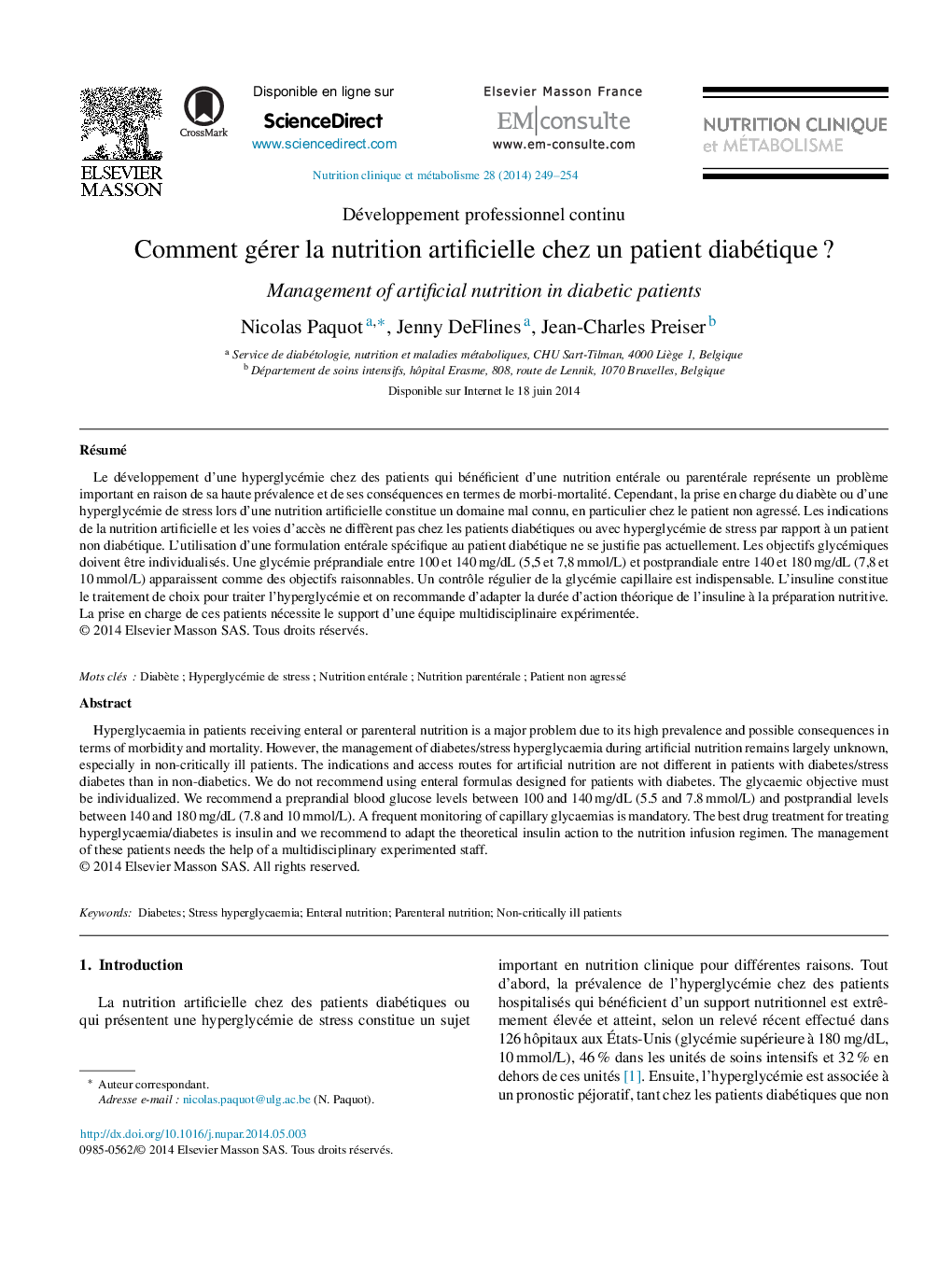| Article ID | Journal | Published Year | Pages | File Type |
|---|---|---|---|---|
| 2692843 | Nutrition Clinique et Métabolisme | 2014 | 6 Pages |
RésuméLe développement d’une hyperglycémie chez des patients qui bénéficient d’une nutrition entérale ou parentérale représente un problème important en raison de sa haute prévalence et de ses conséquences en termes de morbi-mortalité. Cependant, la prise en charge du diabète ou d’une hyperglycémie de stress lors d’une nutrition artificielle constitue un domaine mal connu, en particulier chez le patient non agressé. Les indications de la nutrition artificielle et les voies d’accès ne diffèrent pas chez les patients diabétiques ou avec hyperglycémie de stress par rapport à un patient non diabétique. L’utilisation d’une formulation entérale spécifique au patient diabétique ne se justifie pas actuellement. Les objectifs glycémiques doivent être individualisés. Une glycémie préprandiale entre 100 et 140 mg/dL (5,5 et 7,8 mmol/L) et postprandiale entre 140 et 180 mg/dL (7,8 et 10 mmol/L) apparaissent comme des objectifs raisonnables. Un contrôle régulier de la glycémie capillaire est indispensable. L’insuline constitue le traitement de choix pour traiter l’hyperglycémie et on recommande d’adapter la durée d’action théorique de l’insuline à la préparation nutritive. La prise en charge de ces patients nécessite le support d’une équipe multidisciplinaire expérimentée.
Hyperglycaemia in patients receiving enteral or parenteral nutrition is a major problem due to its high prevalence and possible consequences in terms of morbidity and mortality. However, the management of diabetes/stress hyperglycaemia during artificial nutrition remains largely unknown, especially in non-critically ill patients. The indications and access routes for artificial nutrition are not different in patients with diabetes/stress diabetes than in non-diabetics. We do not recommend using enteral formulas designed for patients with diabetes. The glycaemic objective must be individualized. We recommend a preprandial blood glucose levels between 100 and 140 mg/dL (5.5 and 7.8 mmol/L) and postprandial levels between 140 and 180 mg/dL (7.8 and 10 mmol/L). A frequent monitoring of capillary glycaemias is mandatory. The best drug treatment for treating hyperglycaemia/diabetes is insulin and we recommend to adapt the theoretical insulin action to the nutrition infusion regimen. The management of these patients needs the help of a multidisciplinary experimented staff.
